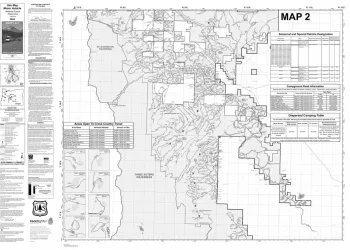Current Conditions
At over 600,000 acres the Olympic National Forest varies from the temperate rain forest to the salt water fjord of Hood Canal all surrounding the rugged peaks of the Olympic mountains. Elevations across the landscape range from below 100 ft. to over 5,000 ft. and precipitation varies widely throughout the terrain. The driest area of the forest in the northeast corner receives less than 25 inches of precipitation a year while the wettest areas on the west side average more than 220 inches annually.
With the vastness of the forest and ever changing conditions as a visitor to a national forest, it is your responsibility to know the conditions before you go and be as prepared as possible.
Trail Conditions
With the dynamic nature of the landscape current conditions are not always available. Our partner Washington Trails Association has resources on their websites to help you plan your trip. We recommend checking the individual recreation site on this website for the authoritative information on pass and fee requirements, closures, and other rules, then visiting a partner page for more information on conditions and what to expect. The Forest Service does not monitor or validate the information on partner pages, and most rely on user input, so please use caution and prepare for all possible conditions.
Weather and Avalanche Danger
Weather can vary vastly across the Peninsula and at a single recreation site. It may sunny when you arrive to trailhead but as you increase elevation you might find yourself in a cold, wet cloud. Always prepare for changing conditions. Visit the National Weather Service and enter the location closest to your planned activities to get the best information. During winter and spring months, make sure to check avalanche danger through the Northwest Avalanche Center.
Road Conditions
The US Forest Service classifies National Forest System roads into five maintenance levels (1-5) based on the level of service provided and the maintenance required, ranging from closed to roads maintained for passenger car traffic. The Olympic National Forest has a majority of maintenance level 2 roads by mileage with most visitors travelling on maintenance level 3 roads and a portion of level 2 roads.
Level 2 roads require a high clearance vehicle, allow for potholes and slumps, and can have single lane areas. Level 3 roads are suitable for passenger cars but do not consider passenger comfort. Potholes are acceptable at maintenance level 3 as well. This means driving will not be as comfortable as your typical driving experience while on the national forest. Drivers should be prudent and have high awareness.
Winter and spring weather can bring high winds and large amounts of rain to the Olympic Peninsula and the Olympic National Forest. Use caution on Forest Service Roads and trails as branches, trees, rocks, slumps, or other debris may have fallen. Snow and ice may be present at higher elevations. Forest roads are not maintained for winter travel and do not receive snow removal. For current road conditions, contact one of our offices.
Motor Vehicle Use Maps

With over 2,000 miles of road across the Olympic National Forest refer to an official, free Motor Vehicle Use Map to view national forest roads open to motorized travel.



